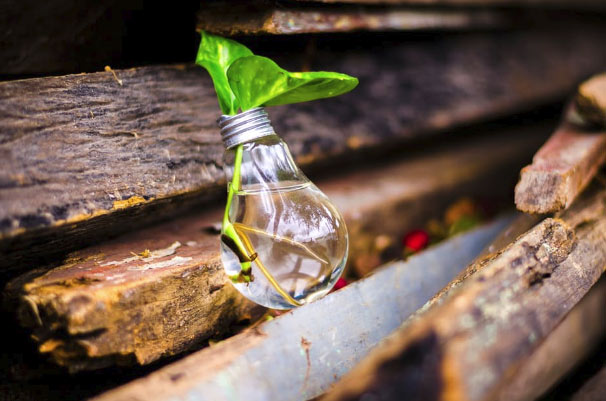The true impact of LED lightbulbs

LED lightbulbs are nothing new. Around for around a decade, they adorn homes and businesses around the first world. Standing for light-emitting diode, LEDs have been hailed as a saviour to the planet. Every single second of the day millions of lights brighten up towns and cities for their inhabitants, and as a result, cause carbon emissions to be let loose into the atmosphere. But these new, greener LED lightbulbs have been proven to cut these emissions down.
So we all know that LED lightbulbs can help make the world an infinitely greener place by reducing carbon footprints, but what is the true impact of them?
Let’s look at the statistics
LED lightbulbs boast impressive figures. Up to 80% more efficient than traditional lightbulbs, such as fluorescent and incandescent bulbs, 95% of the energy in LEDs is converted into light, with just 5% wasted as heat. This is compared to fluorescent lights which convert 95% of energy into heat, and just 5% into light.
What about output?
LED lightbulbs also draw a lot less power than traditional bulbs. A typical 84 watt fluorescent bulb can be replaced by a 36 watt LED lightbulb to give off the same level of light. This reduced energy use reduces the demand from power plants, while decreasing greenhouse gas emissions.
And the toxins?
Fluorescent strip lights contain harmful chemicals such as mercury. Contaminating the environment when disposed of in landfills, this can cause serious implications when done on a large scale. Disposal therefore has to be arranged through a registered waste carrier. LED lightbulbs on the other hand contain absolutely no toxic elements, so switching to LED will help avoid the cost and time implications required for compliant disposal, while of course helping to protect the environment from further toxic waste.
LED lightbulbs are brighter
LED lightbulbs produce a better quality of light distribution. They focus the light in one direction – unlike other types of lighting which waste energy by emitting light in numerous directions. Causing light to be emitted in areas where it isn’t often needed, fluorescent lights and other forms of lighting mean more bulbs are needed to produce the same effect as one or two LEDs.
All in all, there’s much more to LED lightbulbs than simply using less electricity like for like. The impact of LEDs stretches far and wide.
If you’re wanting to switch out your traditional lightbulbs for LEDs, why not take a look at our sterling range available online.
Created by Steve Ellwood on 30th June, 2017
Author
 | Steve EllwoodQualified as an Electrician, founder of BLT Direct |



